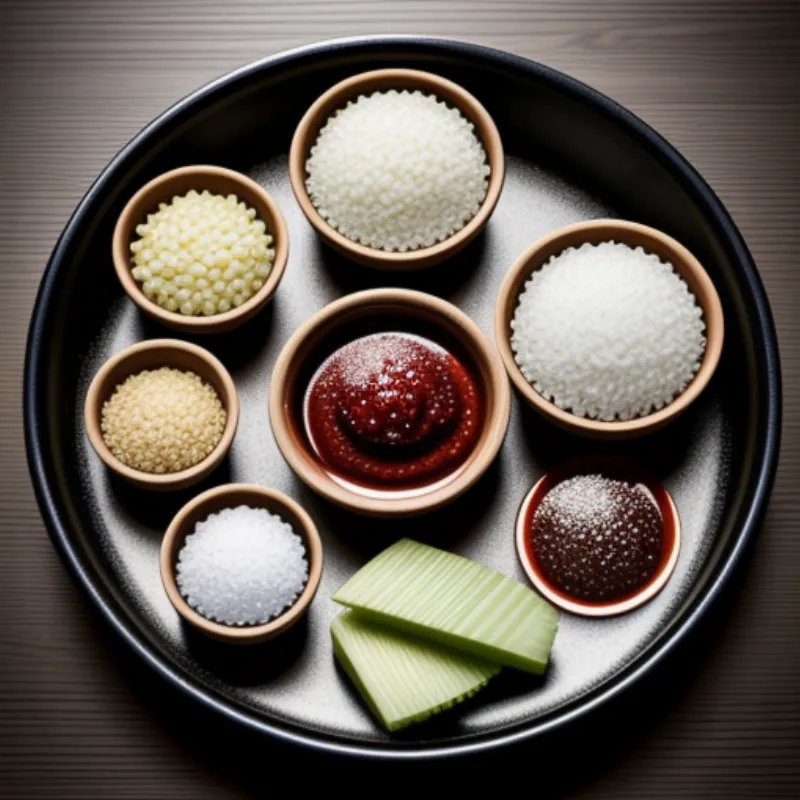Samgyeopsal, the beloved Korean BBQ dish of grilled pork belly, is simply incomplete without its trusty sidekick – a flavorful dipping sauce that tantalizes taste buds and elevates the entire dining experience. While there are countless variations of this sauce, each with its unique character, we’ll unlock the secrets to crafting a classic Samgyeopsal sauce at home that will impress even the most discerning palate.
Demystifying Samgyeopsal Sauce
This Korean dipping sauce, often simply called “Ssamjang” (meaning “wrapped sauce”), is a harmonious blend of savory, sweet, and spicy notes. It’s traditionally made with fermented soybean paste (doenjang), Korean chili paste (gochujang), and a medley of aromatics, creating a symphony of flavors that complement the rich taste of grilled pork belly.
But don’t be intimidated! Making your own Samgyeopsal sauce is surprisingly easy, and the results are far superior to any store-bought version. Get ready to impress your family and friends with this authentic Korean culinary delight!
Gathering Your Ingredients:
Essential Components:
- 2 tablespoons doenjang (Korean fermented soybean paste): This is the backbone of our sauce, lending a deep, savory, and slightly funky flavor. Look for it at Korean grocery stores or online.
- 1 tablespoon gochujang (Korean chili paste): Adding a kick of heat and a touch of sweetness, gochujang is a pantry staple in Korean cuisine. Choose your preferred level of spiciness.
- 1 tablespoon toasted sesame oil: The nutty aroma and richness of sesame oil are essential for that authentic Korean flavor.
- 1 tablespoon sugar: This balances the saltiness of the pastes and adds a hint of sweetness.
- 1 clove garlic, minced: Garlic adds a pungent kick to the sauce.
- 1 teaspoon finely chopped green onion: For a fresh, herbaceous note.
Optional Enhancements:
- 1/2 teaspoon gochugaru (Korean chili flakes): For an extra layer of heat.
- 1/2 teaspoon sesame seeds, toasted: For added nuttiness and visual appeal.
- Pinch of black pepper: To enhance the savory depth.
Tools of the Trade:
- Small mixing bowl
- Measuring spoons
- Chopping board
- Knife
Let’s Get Saucy!
- Combine the Pastes: In your mixing bowl, combine the doenjang and gochujang. Using a spoon, mash them together until well incorporated.
- Add the Aromatics: Stir in the minced garlic and chopped green onion.
- Incorporate the Liquids: Pour in the toasted sesame oil and mix thoroughly.
- Sweeten the Deal: Add the sugar and stir until fully dissolved.
- Taste and Adjust: Give your sauce a taste test! Feel free to adjust the sweetness, spiciness, or saltiness to your liking. You can add a pinch of gochugaru for more heat, a touch more sugar for extra sweetness, or a dash of salt if needed.
- Optional Finishing Touches: For added texture and flavor, sprinkle in the toasted sesame seeds and a pinch of black pepper (if using).
Tips from a Sauce Master:
- Doenjang and Gochujang: These pastes are the heart of your Samgyeopsal sauce. Don’t be afraid to experiment with different brands to find your favorites. Some are saltier, some spicier, and some have a stronger fermented flavor.
- Fresh is Best: While pre-minced garlic is convenient, using a fresh clove adds a brighter, more pungent flavor to your sauce.
- Taste as You Go: Taste your sauce at various stages to ensure the flavors are balanced to your preference.
- Storage: Store any leftover sauce in an airtight container in the refrigerator for up to a week.
Serving Suggestions:
Samgyeopsal sauce is incredibly versatile. Here are a few ideas:
- Classic Samgyeopsal: The perfect dipping companion for your grilled pork belly.
- Vegetable Platter: Use it as a dip for fresh lettuce wraps, cucumbers, carrots, or any other vegetables you enjoy.
- Rice and Noodles: Add a dollop to your bowl of rice or noodles for an extra layer of flavor.
- Marinade: Thin out the sauce with a little water and use it as a marinade for chicken, beef, or tofu.
Frequently Asked Questions:
Can I make Samgyeopsal sauce ahead of time?
Absolutely! In fact, making it ahead of time allows the flavors to meld together, resulting in an even tastier sauce. Just store it in an airtight container in the refrigerator for up to 3 days.
What can I substitute for doenjang?
While nothing quite replicates the unique flavor of doenjang, you can try using a mixture of miso paste and soy sauce as a substitute. Start with a 1:1 ratio and adjust to your taste.
Is Samgyeopsal sauce spicy?
The level of spiciness can vary depending on your gochujang and whether you add gochugaru. If you prefer a milder sauce, use a less spicy gochujang or omit the gochugaru.
 Ingredients for Samgyeopsal sauce
Ingredients for Samgyeopsal sauce
 Samgyeopsal Sauce in a bowl
Samgyeopsal Sauce in a bowl
Ready to Take Your Taste Buds on a Korean Adventure?
Making your own Samgyeopsal sauce is an act of culinary love. It’s a chance to create something truly special with your own hands and share the flavors of Korea with your loved ones. So, gather your ingredients, put on your apron, and let’s get cooking! Don’t forget to share your culinary creations and tag us on social media! We’d love to see your Samgyeopsal sauce masterpieces!
